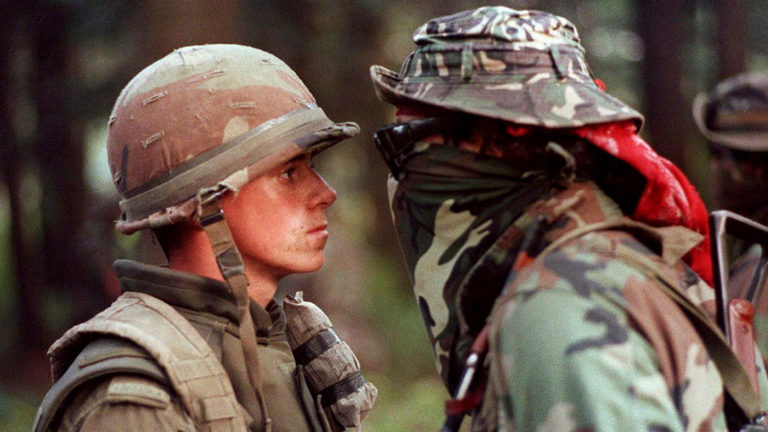This year marks 150 years since Canada’s Confederation. Pundits and institutions are feverishly marketing and promoting this celebration across all media. However, for Indigenous people in Canada, this period marks a time of occupation and continued colonization. And so, we’re encouraged to ask, what exactly are we celebrating and who is invited to the party?
REEL Canada, Beyond 150 Years: An Acknowledgement of Cinematic Territory, presented at Vancity Film Centre in partnership with the Vancouver International Film Festival and the National Film Board of Canada, has brought these questions and so much more into the Canadian fabric. It aimed to shift the dominant narrative around colonization and to recognize the historic and continued resilience and contribution of Indigenous filmmakers across Canada.
Running from March 5 to March 7, Beyond 150 Years invited participants to gather at the theatre to listen and to learn stories, within an educational program developed with a high school audience in mind.
Legendary Abenaki filmmaker and activist Alanis Obomsawin (Kanehsatake: 270 Years of Resistance) and award-winning Michif filmmaker, media artist and stop-motion director Amanda Strong (Four Faces of the Moon), briefly spoke with rabble.ca about their work and experience at Beyond 150 Years, in particular around its educational elements.
Obomsawin proudly exclaimed how she was “shocked to see how the images were aimed at students, for what would interest them, and weren’t commercialized.” The engaged audience, with many high school students present, was “listening to us, not telling us how to speak.”
Strong remarked on the power of storytelling and multimedia art in bringing about educational change. Coining her films as “hybrid docs, where the visual and sound is the language,” she mentioned how “language can restrict to a certain way of thinking. To pull that away is to make a more universal understanding of issues.”
Both filmmakers are often contacted by universities and schools with requests to incorporate their films on topics such as land resistance, and reconnecting to oral and written history, into the classroom.
To bring the power of art and resistance to educational institutions is a vital step in decolonization.
Obomsawin, when asked about what has changed and what has stayed the same in the time since her film Kanehsatake remarked on the ebb and flow in these forms of resistance. But she was also encouraged by how the Canadian public is listening to Indigenous people more than it ever has before.
There is still so far to go, but looking beyond 150 years of celebration, is an essential way to start.
Please chip in to keep stories like these coming.
Image: Kanehsatake: 270 Years of Resistance




